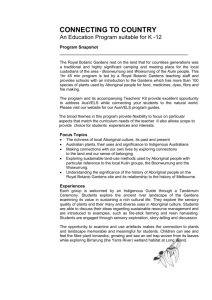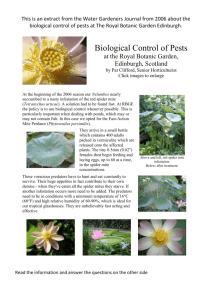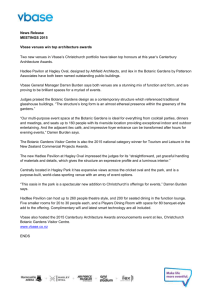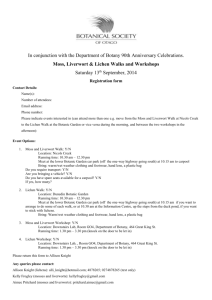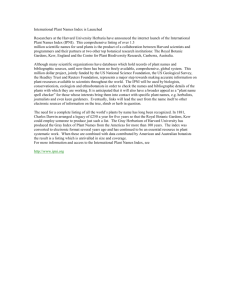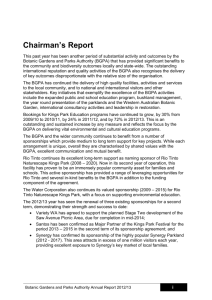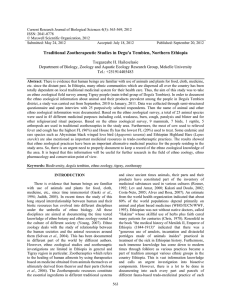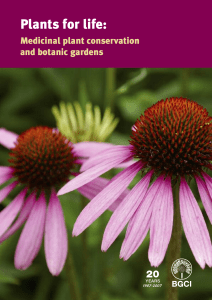Ethno botany and Indigenous knowledge
advertisement
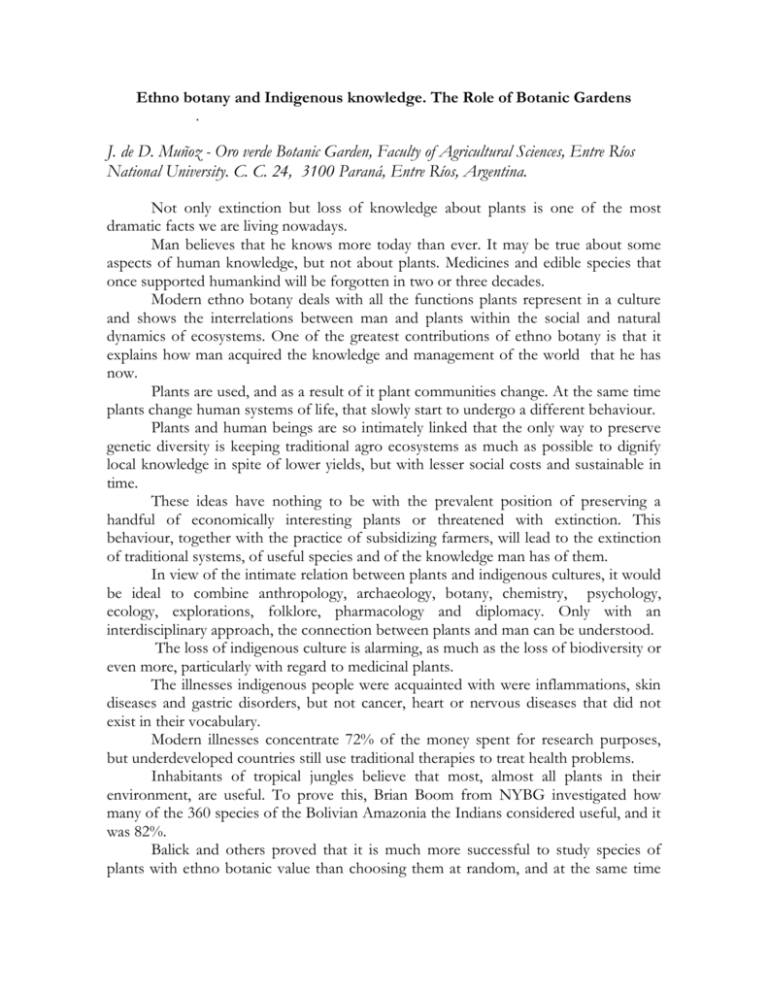
Ethno botany and Indigenous knowledge. The Role of Botanic Gardens . J. de D. Muñoz - Oro verde Botanic Garden, Faculty of Agricultural Sciences, Entre Ríos National University. C. C. 24, 3100 Paraná, Entre Ríos, Argentina. Not only extinction but loss of knowledge about plants is one of the most dramatic facts we are living nowadays. Man believes that he knows more today than ever. It may be true about some aspects of human knowledge, but not about plants. Medicines and edible species that once supported humankind will be forgotten in two or three decades. Modern ethno botany deals with all the functions plants represent in a culture and shows the interrelations between man and plants within the social and natural dynamics of ecosystems. One of the greatest contributions of ethno botany is that it explains how man acquired the knowledge and management of the world that he has now. Plants are used, and as a result of it plant communities change. At the same time plants change human systems of life, that slowly start to undergo a different behaviour. Plants and human beings are so intimately linked that the only way to preserve genetic diversity is keeping traditional agro ecosystems as much as possible to dignify local knowledge in spite of lower yields, but with lesser social costs and sustainable in time. These ideas have nothing to be with the prevalent position of preserving a handful of economically interesting plants or threatened with extinction. This behaviour, together with the practice of subsidizing farmers, will lead to the extinction of traditional systems, of useful species and of the knowledge man has of them. In view of the intimate relation between plants and indigenous cultures, it would be ideal to combine anthropology, archaeology, botany, chemistry, psychology, ecology, explorations, folklore, pharmacology and diplomacy. Only with an interdisciplinary approach, the connection between plants and man can be understood. The loss of indigenous culture is alarming, as much as the loss of biodiversity or even more, particularly with regard to medicinal plants. The illnesses indigenous people were acquainted with were inflammations, skin diseases and gastric disorders, but not cancer, heart or nervous diseases that did not exist in their vocabulary. Modern illnesses concentrate 72% of the money spent for research purposes, but underdeveloped countries still use traditional therapies to treat health problems. Inhabitants of tropical jungles believe that most, almost all plants in their environment, are useful. To prove this, Brian Boom from NYBG investigated how many of the 360 species of the Bolivian Amazonia the Indians considered useful, and it was 82%. Balick and others proved that it is much more successful to study species of plants with ethno botanic value than choosing them at random, and at the same time plants may show unsuspected actions. This is the case of Catharanthus roseus to treat diabetes, that proved to be extremely useful to treat cancer. Possibilities of success at random are very little. Taxol, for example, was found after testing 35,000 plants. Each year, between 4,000 and 90,000 plants are extinguished. Cultivars disappear at a rate of 2% each year. In the next few years 60.000 plants will be extinct. Each plant drags down other 30 species that depend on it. Each year 2% of the languages of the world disappear and in one century 99% will have disappeared. A language is not only a way of speaking. It contains a culture and the knowledge of this culture. By the middle of the present century almost one half of the ecosystems of the world will have no language capable of interpreting and protecting its biodiversity. Right now, half the population of the world speaks only ten languages. Over 80% of books are translated into four languages. What is worse, since 1990 the cost of modern medicine greatly increased and consequently, the percentage of the world population that can use those medicines has greatly decreased.. On the other hand, genetic therapies are increasing. If politicians do not contemplate the costs of studying medicinal plants and the costs of keeping man in good health, our sermons to protect plants will be absolutely useless. It would be ingenuous to believe that man will protect forests just because they are a treasure of medicinal plants. Traditionally, botanic gardens have played a remarkable role in conservation and education, but nowadays their importance has greatly increased. Botanic gardens will have now to strengthen advisory services, not only regarding botanical research and conservation, but also as sources of knowledge for legislation and political economy. If botanical knowledge remains underestimated as it is now in many countries, worsened by increasing lack of potable water and the continuous growth of the population, humankind will face one of the most terrible problems since its origins. Botanic gardens must undertake now the challenge of proving that life on our planet is based on plants and making it be understood by the greatest possible number of people. However much we resent the loss of biodiversity, it must be stated that: Plants have played a fundamental role in the development of modern cultures. Indigenous knowledge is not only useful to understand the human condition but to enrich western cultures. .
